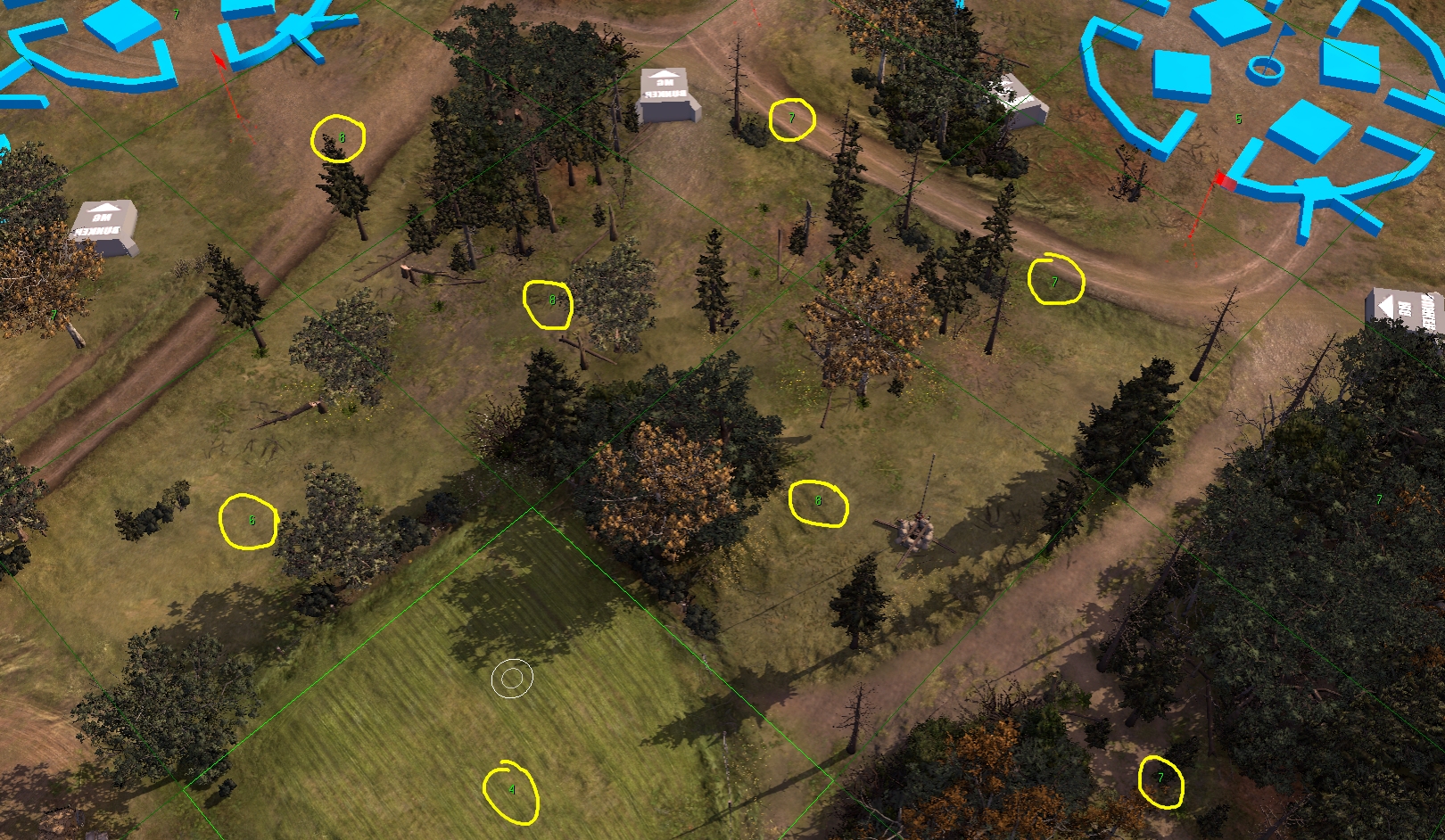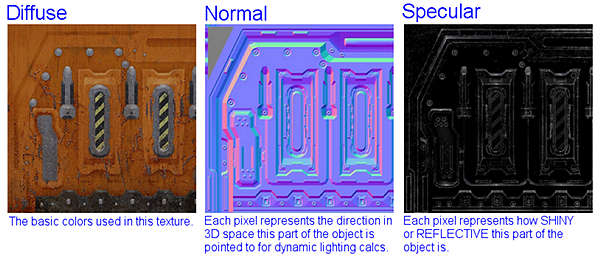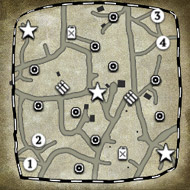When making a map you select a palette of textures to paint the ground with. You can have many textures in the palette. When Relic draws the map, they divide it into 32 meter sections (chunks). Each chunk approves of around 8 textures being used per chunk. Many mappers are sloppy and paint like an artist. They tend to overlap chunks. Meaning, they paint a texture in chunk 1 but a little spills over into chunk 2. Chunk 2 now has to draw that texture even though it is barely/not visible. This could lead to slow rendering performance depending on HOW relic draws the chunks.
NORMAL TEXTURING MODE
Normal 3D graphics would indicate that the chunk gets split into a smaller say 32x32 grid. Each vertex of that grid is alpha blended and drawn using the textures you painted with. So if you used the maximum desired textures for this chunk you would have 24 total textures to deal with:
- 8 Diffuse textures
- 8 Normal map / height map textures
- 8 Specular map textures.
This would indicate that each chunk/mesh is drawn 8 times. Once per texture selected. This assumes code using shaders that does one pass for each texture (actually applies diffuse, normal, specular during the single pass). With modern cards having more texture units or better shader code maybe this number is reduced to only a few passes for each chunk.
Now you have to render all of the splines and splats in addition to all the rendering you just did.
Example Chunk Count for Lienne Forrest

MEGATEXTURE MODE
A name coined by John Carmack (the greatest human being of all time) for the game RAGE. In this mode you can paint a million different textures all at once. Splines, splats, etc can all be applied as much as you want. When the map is compiled, the 32x32 meter chunk is rendered into a single set of Diffuse, Normal, Specular textures. These textures would be of a fixed resolution 512x512, 1024x1024, etc.
This means that no matter how much crap you throw on the map, the 32x32 chunk will be rendered in one single pass by the videocard. This includes all splines, splats, etc. All done in one pass.
The trick becomes how well does the videocard deal with caching all the textures, etc.
QUESTION
Which method is Relic using? Does it matter for performance how many tile textures per chunk are used? I see SO MANY maps that have 8 textures used and can be reduced down to 3 or 4 with NO visual change.
The limit of 8 textures could be set just for Worldbuilder performance where each chunk has to be drawn seperately while you are editing on the fly. Since Relic needs to apply a lot of dynamic splats during the game (burn marks, artillery strikes, blood, etc) they may just do it all on the fly in what I have called NORMAL mode.















 cblanco ★
cblanco ★  보드카 중대
보드카 중대  VonManteuffel
VonManteuffel  Heartless Jäger
Heartless Jäger 